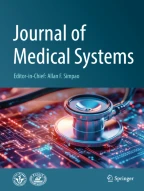Abstract
Fibromyalgia syndrome (FMS) is a chronic musculoskeletal disease which causes dysfunction of the autonomic nervous system. Sympathetic Skin Response (SSR) is a part of electrical impedance of body which is affected by the autonomic nervous system dysfunctions. In this study, values obtained from the results of the patients diagnosed with fibromyalgia syndrome, and healthy subjects blood samples in the laboratory conditions are recorded in Suleyman Demirel University, Faculty of Medicine, Department of Physical Medicine and Rehabilitation. SSR measurements are recorded from patients and healthy controls. Values of latency time, maximum amplitude and elapsed time between two stimulus parameters are obtained from recorded sympathetic skin response data by using Matlab software. The relationship between SSR parameters and laboratory tests is investigated by using artificial neural networks. As a result SSR seems to be a valid parameter in the classification of FMS.
Similar content being viewed by others
References
Walsh, N. E., Dumitru, D., Schoenfeld, L. S., and Ramamurthy, S., “Treatment of the patient with chronic pain”, Physical Medicine and Rehabilitation: Principles and Practice. 4th ed., 493–529, Philadelphia: Lippincott Williams & Wilkins, 2005.
Krypel, L. L., Fibromyalgia: A review of its pathophysiology and drug treatment. J. Pharm. Pract. 22:6–16, Feb 2009.
Eisinger, J., Dysautonomia, fibromyalgia and reflex dystrophy. Arthritis Res. Ther. 9(4):105, 2007.
Fietta, P., Fietta, P., and Manganelli, P., Fibromyalgia and psychiatric disorders. Acta. Biomed. 78(2):88–95, Aug 2007.
Wolfe, F., Smythe, H. A., and Yunus, M. B., “The American College of Rheumatology 1990 Criteria for the Classification of Fibromyalgia”, Report of the Multicenter Criteria Committee. Arthritis Rheum. 33(2):160–72, Feb. 1990.
Ulas, U. H., Unlu, E., Hamamcioglu, K., Odabasi, Z., Cakci, A., and Vural, O., Dysautonomia in fibromyalgia syndrome: sympathetic skin responses and RR interval analysis. Rheumatol. Int. 26:383–387, 2006.
Vaerøy, H., Qiao, Z. G., Mørkrid, L., and Førre, O., Altered sympathetic nervous system response in patients with fibromyalgia (fibrositis syndrome). J. Rheumatol. 16(11):1460–1465, Nov. 1989.
Ozkan, O., Yildiz, M., Bilgin, S., and Köklükaya, E., Measuring the sympathetic skin response on body and using as diagnosis-purposed for lung cancer patients by artificial neural networks. J. Med. Syst. 34(3):407–412, June 2010.
Aygül, R., Ulvi, H., and Deniz, O., Normallerde sempatik deri cevabı dalga formları. İnönü Üniversitesi Tıp Fakültesi Dergisi 12(2):77–82, 2005.
Hilz, M. J., and Dütsch, M., Quantitative studies of autonomic function. Muscle& Nerve 33(1):6–20, Jan 2006.
Ahuja, N. D., Agarwal, A. K., Mahajan, N. M., Mehta, N. H., and Kapadia, H. N., “GSR and HRV: Its application in clinical diagnosis”, Proceedings of the 16th IEEE Symposium on Computer-Based Medical Systems (CBMS’03); 2003.
Berker, E., and Dinçer N., Kronik ağrı ve rehabilitasyonu. Ağrı Dergisi 17(2):10–16, 2005.
Lee, C., Yoo, S. K., Park, Y., Kim, N., Jeong, K., and Lee, B., “Using neural network to recognize human emotions from heart rate variability and skin resistance”, Proceedings of the 2005 IEEE, Engineering in Medicine and Biology 27th Annual Conference, Shanghai, China, September 1–4, 2005.
Zhai, J., Barreto, A. B., Chin, C., and Li, C., “Realization of stress detection using psychophysiological signals for improvement of human-computer interactions”, Proceedings of the IEEE Southeastcon 2005, pp. 415–420, 2005.
Okuda-Matsuoka, H., Tanaru, T., Mano, Y., and Takayanagi, T., Sympathetic skin responses in the face by magnetic stimulation of the neck. Rinsho Shinkeigaku 36(10):1190–1192, 1996.
Werbos, P. J., “Beyond regression: New tools for prediction and analysis in the behavioral sciences,” Ph. D. Thesis, Harvard University, Cambridge, MA, 1974. Also published as The Roots of Backpropagation, New York: John Wiley & Sons, 1994.
Rumelhart, D. E., and McClelland, J. L., Parallel distributed processing: Explorations in the microstructure of cognition, vol. 1. Cambridge: MIT, 1986.
Backpropagation, W., The Free Encyclopedia, August, 2008, Available at: http://en.wikipedia.org/w/index.php?title=Backpropagation&oldid=233606899
Demuth, H., and Beale, M., Neural network toolbox: For use with MATLAB, User’s Guide Version 3.0, 1998.
Lin, C., and Lee, G., Neural fuzzy systems, Prentice Hall, 236–240, 242, 445–448, 1996.
Levenberg–Marquardt algorithm, Wikipedia, The Free Encyclopedia, August, 2008, Available at: http://en.wikipedia.org/w/index.php?title=Levenberg%E2%80%93Marquardt_algorithm&oldid=233323587
MATLAB® Documentation neural network toolbox help, Version 6.5, Release 13, The MathWorks, Inc., 2002.
Acknowledgements
This research was supported by The Scientific and Technical Research Council of Turkey (TUBITAK) through The Research Support Programs Directorate (ARDEB) with project number of 108E036, and project name of “The Evaluation of HRV, SSR and Psychiatric Tests with Wavelet Transform and Artificial Neural Network for Diagnosis of Fibromyalgia Syndrome and Determination of Their Relations” and by The Coordination Unit of Scientific Research Projects of Sakarya University.
Author information
Authors and Affiliations
Corresponding author
Rights and permissions
About this article
Cite this article
Özkan, Ö., Yildiz, M. & Köklükaya, E. The Correlation of Laboratory Tests and Sympathetic Skin Response Parameters by Using Artificial Neural Networks in Fibromyalgia Patients. J Med Syst 36, 1841–1848 (2012). https://doi.org/10.1007/s10916-010-9643-4
Received:
Accepted:
Published:
Issue Date:
DOI: https://doi.org/10.1007/s10916-010-9643-4
